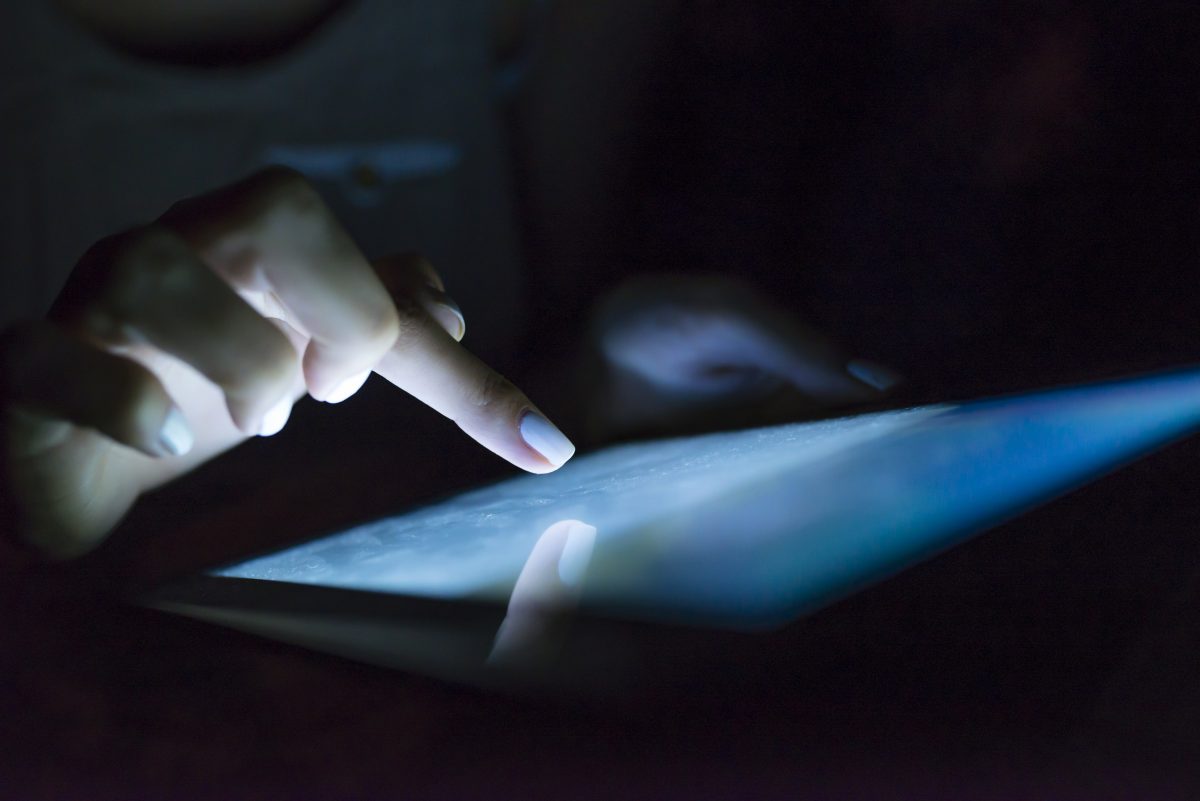Smartphones are everywhere:
77% of Americans have one, which means most of us have tiny, glowing screens at our fingertips at all times.
While screens make our lives easier in some ways, they also make taking care of our eyes more complex. One screen-related health concern you may have heard about is blue light. We talked to Dr. Steven Anderson, a medical director at BlueCross BlueShield of Tennessee who specializes in ophthalmology, to find out what you need to know.
What is blue light?
Blue light is a natural part of the light spectrum that is visible to the human eye. It can come from:
- Electronic screens
- TVs
- Computers
- Smartphones
- Tablets
- Fluorescent, LED and energy-efficient lighting
- The sun
Blue light naturally suppresses the body’s production of melatonin. This can be helpful during the day because it can boost mood and attention and improve reaction time.
What kinds of problems can blue light cause?
Blue light becomes a problem at night, when it can disrupt your body’s sleep clock and put a strain on your eyes.
“The studies on the effects of blue light are still in their early stages, but it has been proven that blue light affects Circadian rhythms, which regulate sleep,” says Dr. Anderson. “Over time, lack of quality sleep can contribute to health problems such as diabetes, heart disease, and obesity.”
Effects of blue light may include:
- Headaches
- Neck and back pain
- Blurry vision
- Difficulty focusing
- Dry and irritated eyes
- Macular degeneration
How common are problems from blue light?
Medical issues caused by blue light are called digital eye strain, and they affect how we learn and work. Digital eye strain is very common: In recent years, it has overtaken carpal-tunnel syndrome as the #1 computer-related health complaint.
How can you protect your eyes from blue light?
When using digital devices:
1. Take frequent breaks from staring at screens
If you work on computers, try the 20-20-20 rule:
- Look away from the screen every 20 minutes
- At something 20 feet away
- For 20 seconds
2. Expose yourself to lots of light during the day
That will help naturally regulate your body’s wake/sleep cycle
3. Avoid looking at bright screens 2-3 hours before bedtime
If that sounds like a long time to go screenless, start with 1 hour and build up
4. If you need a nightlight, try a dim red or orange one
Red and orange light affect the sleep cycle least
5. Adjust your screen settings or install an app that filters blue/green light at night
Most electronic devices now also have a setting to limit blue light
6. Consider eye protection for blue light
According to the American Optometric Association, two effective types of eye protection are:
- Tinted lenses in glasses or sunglasses: A yellow, amber, orange or red lens can reduce retinal exposure to high-energy light, typically for less than $15
- Anti-reflective coatings: Coatings that filter blue light help prevent digital eye strain, typically starting around $45
“Sunglasses that block ultraviolet (UV) light help protect the eye specifically from UV light, but that is not the same as blue light,” says Dr. Anderson.
Ask your doctor which kind of protection he or she recommends at your annual eye exam.
Get more information about specific health terms, topics and conditions to better manage your health on bcbst.com. BlueCross BlueShield of Tennessee members can access wellness-related discounts on fitness products, gym memberships, healthy eating and more through Blue365®. BCBST members can also find tools and resources to help improve health and well-being by logging into BlueAccess and going to the Managing Your Health tab.



WellTuned provides inspiration and practical advice for healthy living.
WellTuned does not offer medical advice. Any personal health questions should be addressed to your doctor.